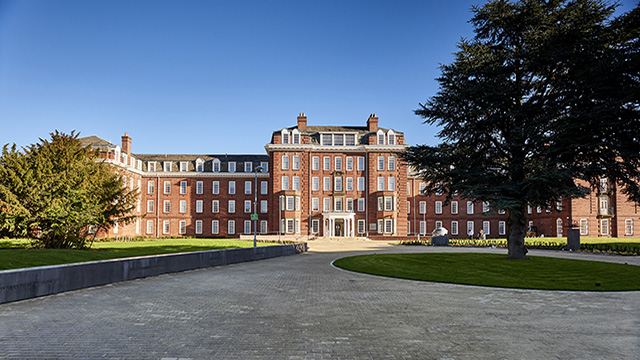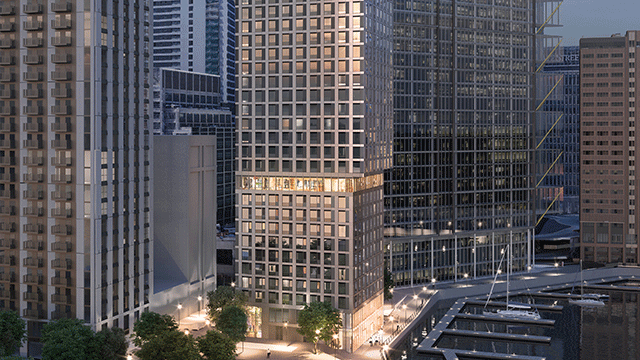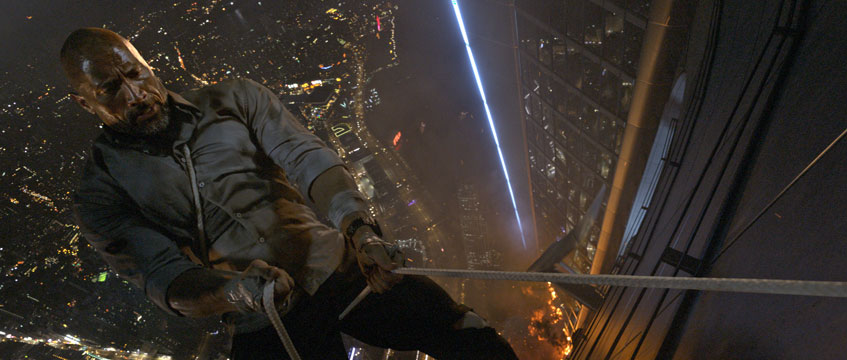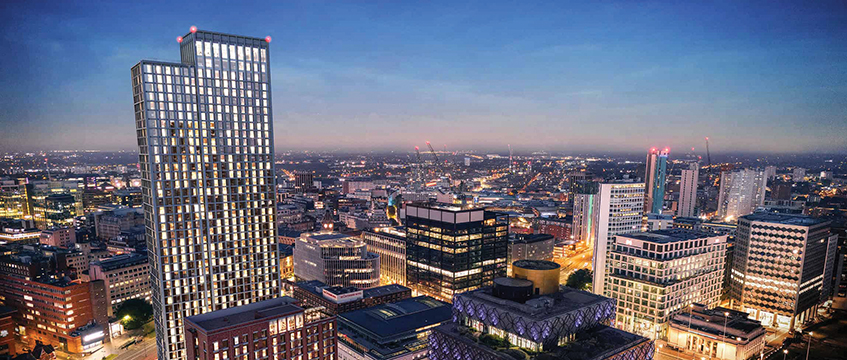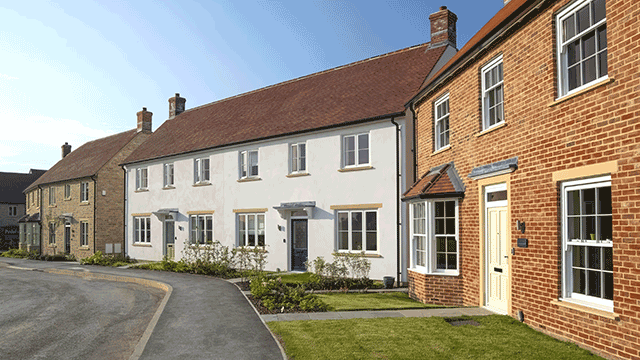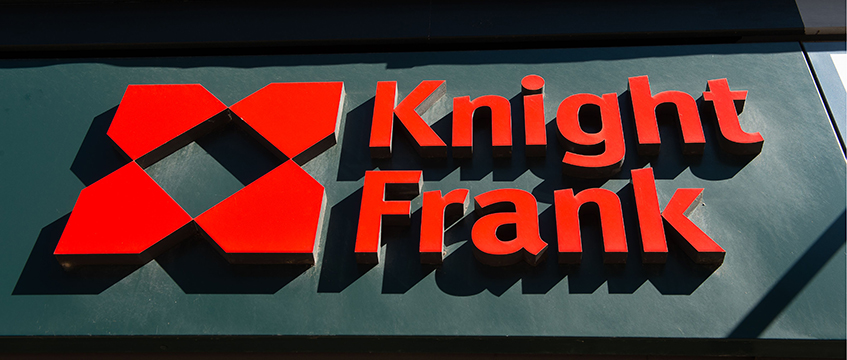As Dwayne Johnson’s blockbuster Skyscraper hits cinemas, Jess Harrold counts down his favourite real estate assets from the movies — and the (fictional) investment opportunities they represent.
10. The Pearl (Skyscraper)
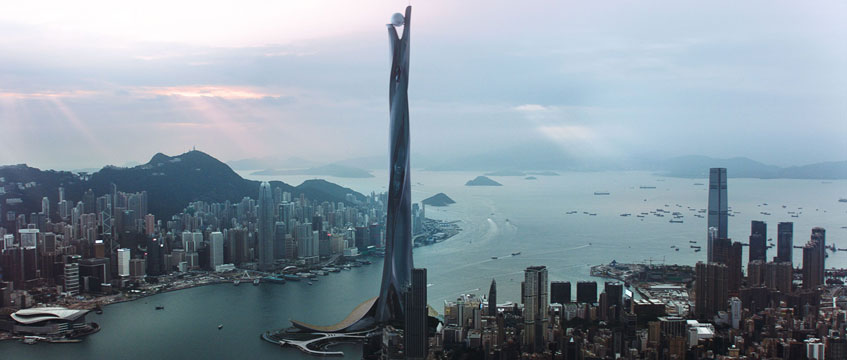
Let’s begin with the new entrant, from Dwayne “The Rock” Johnson’s summer blockbuster, in which ex-FBI agent and amputee Will Sawyer (Johnson) must wrestle terrorists into submission, with his family’s lives at stake, 240 floors up in the world’s new tallest building — while it’s on fire.
It’s the Rock in the ultimate hard place, in what is essentially Die Hard meets The Towering Inferno — but we’ll get to them in a minute. Skyscraper’s titular tower, the Pearl, definitely looks the part as a strikingly organic piece of architecture, and a handy infographic that forms part of the film’s trailer shows it towering over Dubai’s Burj Khalifa at a whopping 3,500 feet.
Indeed, it may well deserve to go higher in this list, but let’s see the movie first. Check out next week’s Diary for the official EG review.
Ideal for: The trophy asset to end all trophy assets. The Pearl would be the jewel in anyone’s portfolio.
9. Cloud City (Star Wars: Episode V – The Empire Strikes Back)
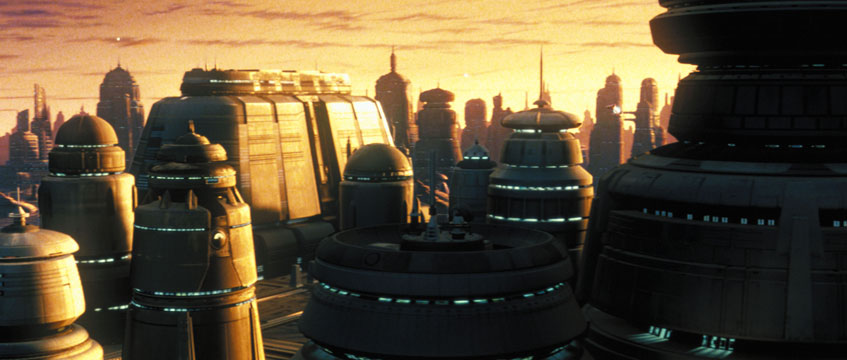
The galaxy far, far away isn’t known for its prime locations. Hoth is an ice planet. The Ewok village on the forest moon of Endor is a bit outdoors-y, to put it mildly. The best Tatooine has to offer is the Mos Eisley Cantina, and that’s a wretched hive of scum and villainy.
Alderaan was nice by all accounts, but the Empire blew it up (spoilers?) Thank the heavens then for Cloud City. According to the online Wookieepedia (yes, that is a real thing), Cloud City is “a Tibanna gas mining colony floating in the clouds of the planet Bespin, located in the Anoat sector of the Outer Rim Territories”.
But it’s a lot more fun than that sounds, thanks to its baron administrator, the ever-charismatic Lando Calrissian. Under his influence, the top 50 of its impressive 392 levels form a luxury resort, renowned for its casinos. It kind of makes you wonder why the bad guys spend so much time building ever-bigger Death Stars, when they could be hanging out on Cloud City.
Ideal for: A destination shopping centre/leisure complex. Experts say that adding “experience” is the key to saving retail – what experience could be better than a little sky-walking with your head in the clouds?
8. Unnamed tower (High-Rise)
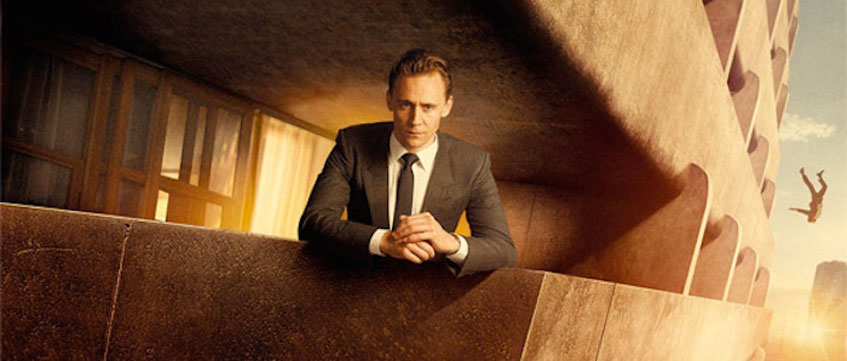
Director Ben Wheatley’s 2016 adaptation of JG Ballard’s dystopic 1975 novel is not one to suit all tastes. But it definitely offers a thought-provoking glimpse of a terrifying future/alternate past.
As EG’s review at the time put it: “Picture the development: A tower, a cross between the brutalist architecture of the Barbican’s high-rise flats topped with the sort of angles Will Alsop would be proud of. It is residential, mixed tenure, with its own gym, swimming pool, squash courts, supermarket and school. A vertical city.”
So far, so familiar to anyone involved in development in London. In High-Rise’s high-rise, residents are divided by class, with the upper classes unsurprisingly on top and the building’s architect, Anthony Royal (Jeremy Irons) lording over it all from his penthouse, with a roof terrace big enough for his wife to indulge in a spot of horse-riding.
And an immaculately dressed (at least as the film begins…) Tom Hiddleston stands in the middle of it all, his own social ascent part of the building’s slow descent into anarchy. An interesting place to visit for a couple of hours, but you wouldn’t want to live there.
Ideal for: Ambitious co-living scheme/social experiment. Hands-on managing agents recommended.
7. Peach Trees (Dredd)
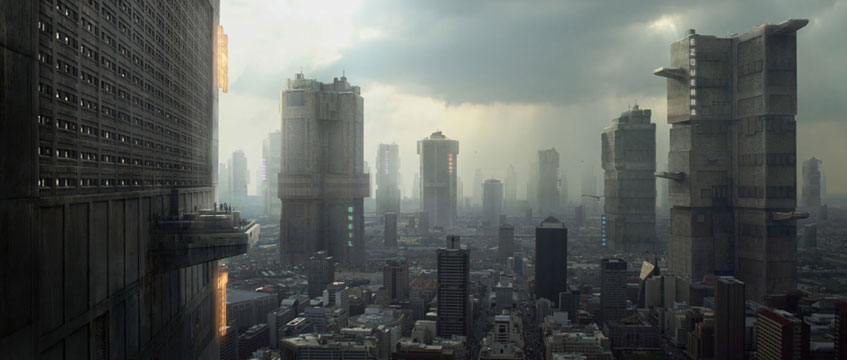
If you take the concept of High-Rise and turn the dial up to 11, you end up with Peach Trees, the 200-floor self-contained city located in the unlucky-for-most Section 13 of Mega City-One (which, according to Judge Dredd lore, is itself a future reaction to massive over-population in North America).
An arcology experiment gone wrong, Peach Trees is left as a lawless nightmare following a gang war ultimately won by the ruthless Ma-Ma (Lena Headey, making her portrayal of Game of Thrones’ Cersei Lannister seem sweetness and light in comparison).
Judge Dredd, as ever, is “the law” — and so it falls him and his rookie companion to climb the crime-ridden tower floor-by-floor to impose justice.
Ideal for: Gentrification. On an epic scale.
6. Glass Tower (The Towering Inferno)
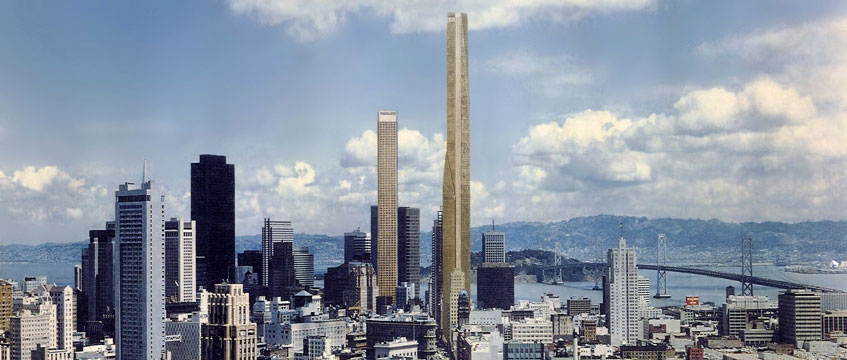
Back in 1974, cinema’s vision of a new world’s tallest building was a mere 138 storeys high – but that was more than enough to dominate the San Francisco skyline in what legendary critic Roger Ebert described as “a brawny blockbuster of a movie, by far the best of the mid-1970s wave of disaster films… an example of Hollywood commercial moviemaking at its finest”.
And indeed, The Towering Inferno was a truly star-studded affair: Steve McQueen, Paul Newman, Faye Dunaway, Fred Astaire, OJ Simpson, the list goes on.
But stealing the spotlight was the golden, gleaming Glass Tower, as it inched fate-temptingly towards its inevitable doom. A litany of builders’ cost-cutting measures stand revealed to the fury of the building’s architect, Doug Roberts (Newman) and fire chief O’Hallorhan (McQueen), who rails: “You guys just keep building ‘em as high as you can!”
Ideal for: A frightening example of the dangers of cutting corners. Or, as Newman’s Roberts colourfully puts it: “Kind of a shrine to all the bulls*** in the world.”
How to net £15,000 a day from filming in an empty building
Land owners and developers sitting on empty building sites could be making as much as £15,000 a day for letting film companies use their assets. Watch behind the scenes footage at the UK’s most used film location, set of the BBC’s Agatha Christie adaptation: And Then There Were None.

5. Wayne Manor (Batman Begins)
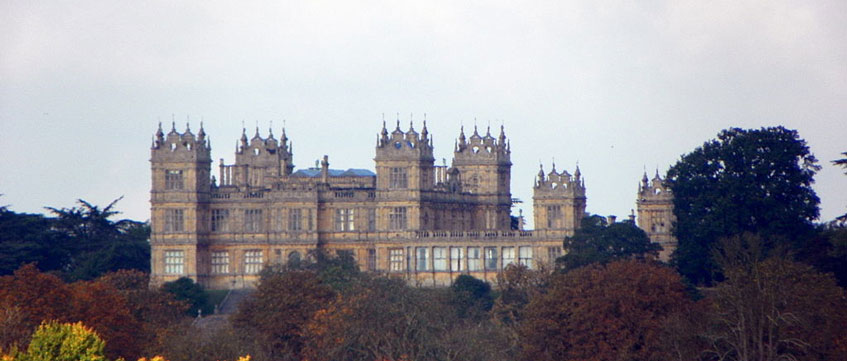
Though our focus is largely on commercial and mixed-use properties, there had to be space for one purely residential entry on the list. Albeit, if you subscribe to the popular fan philosophy that Batman is the real identity, and Bruce Wayne is the mask, then Wayne Manor — or rather what lies underneath — could be said to be business premises. At the very least, it offers one heck of a home office.
The Wayne family’s Gotham City residence, complete with technologically advanced subterranean Batcave, is a vital part of the Bat-mythos, cemented into the public consciousness by the campy 1960s Batman TV series. But it’s never looked more grand than in director Christopher Nolan’s trilogy of films starring the Dark Knight. Unsurprising, since, in Batman Begins, Wayne Manor was played by the Grade I-listed Mentmore Towers, in Buckinghamshire, built for the Rothschild family.
The final part of the trilogy, The Dark Knight Rises, used lookalike Wollaton Hall, the Elizabethan country house in Nottingham on which Mentmore Towers was based. Batcave scenes filmed elsewhere, alas.
Ideal for: The most des of res for an ultra-high-net-worth individual. As the Royal Borough of Kensington and Chelsea will tell you, the super-rich love a property with basement potential. And since Gotham City Council policy seems favourable, Wayne Manor offers serious basement potential.
4. Firehouse Headquarters (Ghostbusters)

As one of the defining features in one of the most beloved films of all, the fire station HQ of the Ghostbusters holds a special place in the heart of any nostalgic child of the 80s. Indeed, it holds the distinction of being the only movie location on this list they can buy in both Lego and Playmobil form (for their own kids, obviously…).
While the fire station Venkman, Stantz, Spengler and Zeddmore call their home in the original movie is a disused one, the one used for exterior shots —which can also be seen in 2016 reboot — remains very much in service.
Firehouse, Hook & Ladder Company 8, to give it its official title, is in Tribeca, Manhattan, its firefighters were among the first responders to terrorist attacks on September 11, 2011, and visiting it is #274 of 1,192 things to do in New York according to TripAdvisor. It was saved from closure, thanks to a public campaign backed by former New York mayor Bill de Blasio and actor (and trained firefighter) Steve Buscemi, and is undergoing a $6m renovation.
Ideal for: If the New York City Fire Department ever does consider it surplus to requirements, it’s perfect for a quirky, WeWork-style shared office space. Who wouldn’t want to slide out for lunch on an actual firefighter’s pole?
3. The Overlook Hotel (The Shining)

Author Stephen King has made no secret of the fact that he is far from a fan of director Stanley Kubrick’s 1979 adaptation of one of his most famous novels, chiefly down to the representation of Jack Nicholson’s main character, Jack Torrance.
But even King must surely agree that the film’s vision of the Overlook Hotel, at least, is a cinematic masterpiece. Looming out of the landscape against the backdrop of the Rocky Mountains, the hotel is filled throughout with an unnerving sense of dread that gradually yields some of the most creepily memorable scenes ever filmed — not to mention the most gloriously unsettling carpet on screen.
In filmmaker Rob Ager’s comprehensive analysis of the film, he addresses the impossible architecture of the Overlook, citing Kubrick’s “spatial mind games with his audience”. Ager explains that the director “intentionally played with our unconscious sense of space in his set design”, adding: “Repeatedly in The Shining we see doors in the wrong places, impossible windows, and rooms that are too big. Can these all be accidental?”
The point to it all, he posits, is that the Overlook is a “symbolic maze” (echoing the literal maze in its grounds) – “a vast labyrinth of winding corridors, mysterious open doorways and disorientating design”. It’s one that both terrifies the audience — and tantalisingly beckons you in… No wonder Timberline Lodge in Oregon, which provided the exterior of the Overlook, draws in 2m visitors a year.
Ideal for: A five-star hotel, naturally. Just stay out of Room 237. And be sure to provide plenty of play to entertain the hard-working caretaker during the winter close season.
2. Avengers Tower (The Avengers)
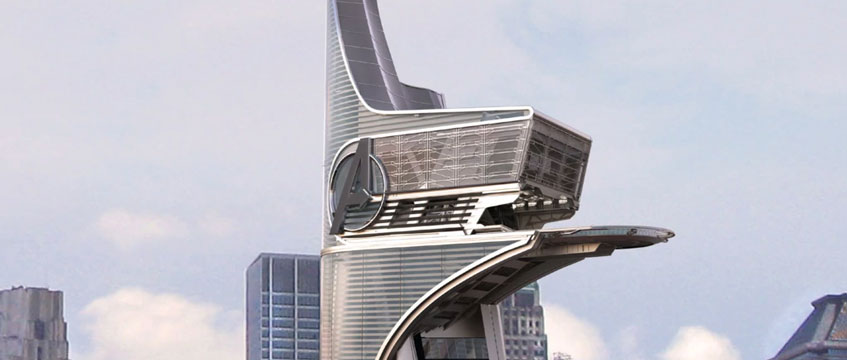
In the original comic books, the Avengers traditionally operate from Avengers Mansion, Tony “Iron Man” Stark’s stately former family townhouse in the heart of New York. For the movies, the much showier Stark portrayed by Robert Downey Jr called for something a little bigger.
Starting life as Stark Tower, until a climactic showdown with Loki and the invading Chitauri removes all but the “A” from the rooftop logo, Avengers Tower is established as the headquarters for “Earth’s Mightiest Heroes” by the time of the sequel, Avengers: Age of Ultron.
Marvel production designer James Chinlund has revealed the secret origin of the skyscraper: Stark purchased Manhattan’s MetLife Building (formerly the PanAm Building) and added “his own piece of parasitic architecture to the top”. It’s not easy to add something new and iconic to the Big Apple skyline, but Avengers Tower has now featured in five of the 20 highest grossing films of all-time (among others), earning its suitably elevated position on this list.
Ideal for: Super high-end offices. Pluses include peerless energy efficiency – the whole building is powered by Stark’s ultra-clean arc reactor technology. Minuses include the insurance premiums that come as a result of the danger-magnet tenants of the upper floors.
1. Nakatomi Plaza (Die Hard)
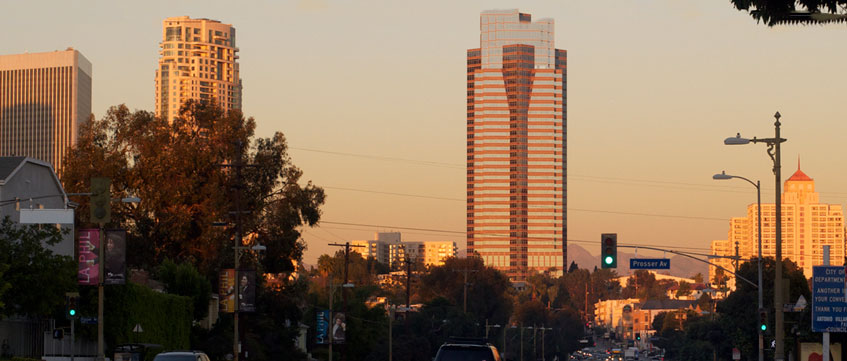
There is an unwritten rule that, in any category Die Hard qualifies for, it must come top. Best Bruce Willis film? Die Hard. Best Christmas film? Die Hard. Best dubbed-out swear word on UK TV? Yippee ki-yay kemosabe, it’s Die Hard. So no surprise then that the iconic tower from the greatest action movie ever made should triumph here.
Nakatomi Plaza, headquarters of the fictional Nakatomi Corporation, is the target of terrorist Hans Gruber (Alan Rickman). Its elevator shafts, ventilation ducts, floor still under construction and large windows provide the ideal setting for the tension-filled efforts of John McClane (Willis) to thwart Gruber, and save his wife, Holly.
In real life, Fox Plaza (as it is known) is currently “undergoing revitalisation” according to its owner, Irvine Company Office Properties. But it’s a tourist hotspot and highlight of any open-top tour of LA, so, if you decide to come out to the coast, get together, have a few laughs, be sure to include it on your itinerary.
Ideal for: A company HQ that makes a real statement. Why not go the whole hog, rebrand as Nakatomi Corporation, and reap the merchandising rewards?
Main pic: Universal/Kobal/REX/Shutterstock
■ Don’t agree with our ranking? Furious we left off your favourite movie building? Let us know @estatesgazette, #PrimeReelEstate
Jess Harrold is EG’s deputy legal and professional editor, and actually has a couple of mentions on Wookieepedia. To send feedback, e-mail jess.harrold@egi.co.uk or tweet @jessharrold or @estatesgazette




